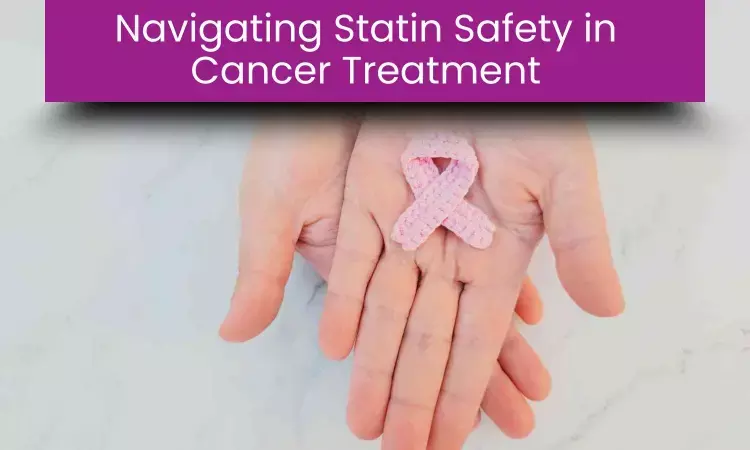- Home
- Medical news & Guidelines
- Anesthesiology
- Cardiology and CTVS
- Critical Care
- Dentistry
- Dermatology
- Diabetes and Endocrinology
- ENT
- Gastroenterology
- Medicine
- Nephrology
- Neurology
- Obstretics-Gynaecology
- Oncology
- Ophthalmology
- Orthopaedics
- Pediatrics-Neonatology
- Psychiatry
- Pulmonology
- Radiology
- Surgery
- Urology
- Laboratory Medicine
- Diet
- Nursing
- Paramedical
- Physiotherapy
- Health news
- Fact Check
- Bone Health Fact Check
- Brain Health Fact Check
- Cancer Related Fact Check
- Child Care Fact Check
- Dental and oral health fact check
- Diabetes and metabolic health fact check
- Diet and Nutrition Fact Check
- Eye and ENT Care Fact Check
- Fitness fact check
- Gut health fact check
- Heart health fact check
- Kidney health fact check
- Medical education fact check
- Men's health fact check
- Respiratory fact check
- Skin and hair care fact check
- Vaccine and Immunization fact check
- Women's health fact check
- AYUSH
- State News
- Andaman and Nicobar Islands
- Andhra Pradesh
- Arunachal Pradesh
- Assam
- Bihar
- Chandigarh
- Chattisgarh
- Dadra and Nagar Haveli
- Daman and Diu
- Delhi
- Goa
- Gujarat
- Haryana
- Himachal Pradesh
- Jammu & Kashmir
- Jharkhand
- Karnataka
- Kerala
- Ladakh
- Lakshadweep
- Madhya Pradesh
- Maharashtra
- Manipur
- Meghalaya
- Mizoram
- Nagaland
- Odisha
- Puducherry
- Punjab
- Rajasthan
- Sikkim
- Tamil Nadu
- Telangana
- Tripura
- Uttar Pradesh
- Uttrakhand
- West Bengal
- Medical Education
- Industry
Statin Therapy in Cancer Patients: Latest JACC Advances Study Examines Drug Interaction Risks

Statin-oncology agent Drug-Drug Interactions (DDIs) are relatively common, but statin use is rarely contraindicated. The Frequency of statin use varies according to cancer type, according to a new study published in JACC Advances.
These findings highlight the importance of individualized risk-benefit assessments to guide statin use in cancer patients. These assessments must consider prognosis, cardiovascular risk, potential drug interactions, and patient preferences.
The authors report that most cancer patients taking statins can continue therapy safely with appropriate monitoring, reinforcing the importance of maintaining cardiovascular protection in a population already at heightened cardiometabolic risk.
Cancer and cardiovascular disease (CVD) share several overlapping risk factors, including age, obesity, hypertension, diabetes, and smoking. Statins remain foundational in primary and secondary prevention of atherosclerotic cardiovascular disease; however, their use in oncology raises important clinical considerations. Many cancer therapies—such as androgen deprivation agents, antiestrogens, anthracyclines, and tyrosine kinase inhibitors—can worsen lipid profiles, increasing the need for lipid management even in patients undergoing active cancer treatment.
At the same time, oncology patients frequently experience polypharmacy, making drug–drug interactions (DDIs) particularly relevant. Several anticancer drugs and statins share CYP3A4 metabolic pathways, potentially increasing statin levels or altering the safety and efficacy of cancer therapies, prompting a need for systematic evaluation of these interactions.
To assess potential concerns, investigators reviewed all U.S. FDA oncology drug approvals from June 2019 to June 2024, identifying 138 agents. Using UpToDate Lexidrug, they evaluated each for interactions with five commonly used statins—rosuvastatin, atorvastatin, simvastatin, pravastatin, and lovastatin—applying the Lexidrug risk rating system. They also performed a scoping review of statin prescribing in cancer patients. A September 2024 PubMed search yielded 9,800 records, of which 20 observational studies met criteria, covering statin use across 23 cancer types. Data extraction focused on cancer type, statin users, and total patient numbers, with descriptive statistics and chi-square tests used for comparisons.
The key findings from the study include:
- The analysis identified interactions between statins and 33 of 138 oncology agents (23.9%).
- Simvastatin had the highest rate of interactions (22%), followed by atorvastatin (15%), lovastatin (12%), rosuvastatin (9%), and pravastatin (4%). Most interactions (87%) were level C, meaning that the combination can generally be used with monitoring.
- Only 7% were level X contraindications, all involving adagrasib (approved for NSCLC and colorectal cancer), tucatinib (breast and colorectal cancer), and asciminib (chronic myeloid leukemia). These contraindications were mainly linked to simvastatin and lovastatin, while asciminib also showed level X interactions with rosuvastatin and atorvastatin. (Figure 1)
Figure 1: Interactions Between Statin and Recently Approved Oncology Drugs
The scoping review captured data from 2,33,774 patients across 20 studies. Statin use varied widely by cancer type. The highest rates were observed in prostate cancer (53%) and lung cancer (32%), which may reflect shared cardiometabolic risk factors and treatment-associated dyslipidemia. Conversely, statin use was lowest in liver cancer (8%) and breast cancer (10%). Fifteen cancer types demonstrated statin use of 20% or higher, reflecting the broad need for cardiovascular risk management in oncology populations.
Taken together, these findings indicate that while statin–oncology DDIs occur in nearly one-quarter of recently approved cancer drugs, the vast majority are manageable and should not deter statin continuation in appropriate patients. The authors emphasize that decisions regarding statin use should consider prognosis, cardiovascular risk, potential DDIs, and patient preferences. In most scenarios, switching to an alternative statin or adjusting therapy is preferable to discontinuation. Overall, the study reinforces the importance of individualized cardiovascular management in patients with cancer, where both disease processes intersect clinically and therapeutically.
Reference: Chou E, Legasto CS, Chin AK, Baik AH, Schulte BC. Statin Use in Patients With Cancer: Drug Interaction and Statin Usage. JACC Adv. 2025 Oct 21;4(11 Pt 1):102259. doi: 10.1016/j.jacadv.2025.102259. Epub ahead of print. PMID: 41124987; PMCID: PMC12589975.
Dr Prem Aggarwal, (MD Medicine, DNB Medicine, DNB Cardiology) is a Cardiologist by profession and also the Co-founder and Chairman of Medical Dialogues. He focuses on news and perspectives about cardiology, and medicine related developments at Medical Dialogues. He can be reached out at drprem@medicaldialogues.in


